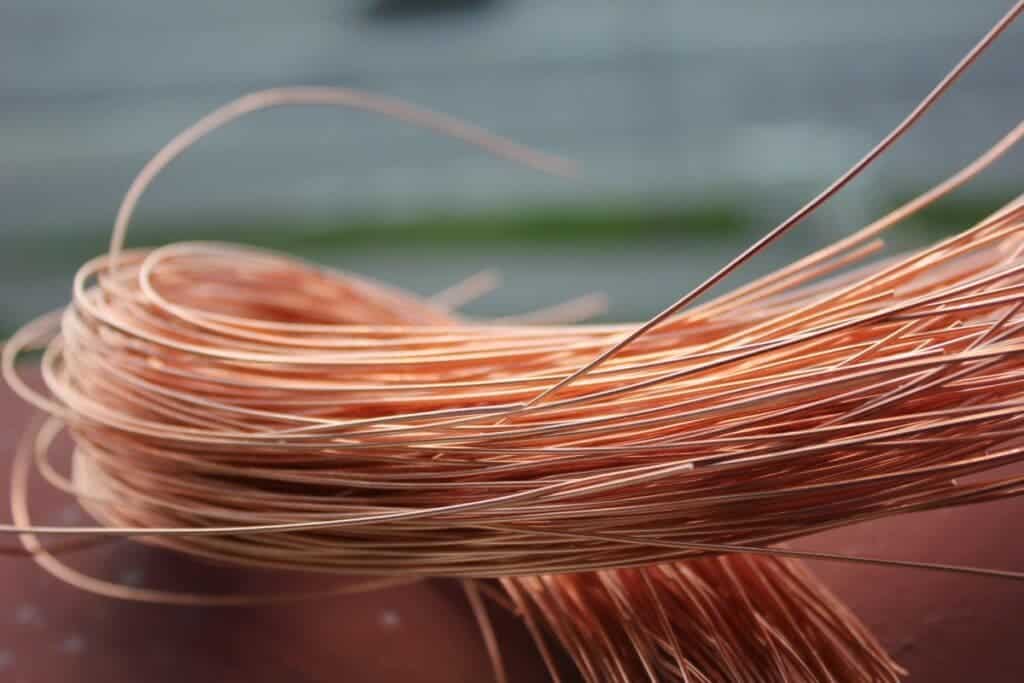A recent report published in the New England Journal of Medicine reminds us just how stunning copper’s antimicrobial properties can be. While the novel coronavirus survived for up to three days on plastic surfaces and two days on stainless steel, it was completely gone from copper surfaces after only four hours. This was hardly surprising. After all, we’ve known about copper’s disinfectant powers for millennia.

There aren’t many folk remedies that have stood the test of time — and the test of science — but copper is one of them.
From ancient times to modern buildings
The Edwin Smith Papyrus, ascribed to an Egyptian doctor circa 1700 BC, shows that Egyptians considered copper as a tool to treat infections. In 1600 BC, Chinese doctors would sometimes use copper coins to treat heart and stomach pain, and around the same period, Phoenician warriors used shavings from their bronze swords to prevent wound infections. The use of copper as a disinfectant also propagated throughout history.
In many cultures, children used copper drinking vessels because it was known that children who drink from copper don’t get diarrhea as often.
Copper is biostatic, meaning most bacteria and viruses don’t grow on it. For this reason, it has been used to line parts of ships to protect against barnacles and mussels — initially in pure or alloy form, and then in copper-based paint. Copper alloys are also used in aquaculture for the same reason.
More recently, researchers have also studied copper and copper alloys and found that they can be used in a myriad of situations to kill germs, with the EPA approving the registrations of these copper alloys as “antimicrobial materials with public health benefits”.

The properties are long-lasting, as well. When Southampton University Professor Bill Keevil analyzed the old railings at New York City’s Grand Central Terminal, they found that the copper worked just as fine as when it was installed 100 years ago.
The key to copper’s antimicrobial properties lies in its chemistry.
Why copper kills germs
Several heavy metals (including gold and silver) can be antimicrobial, but copper’s chemical structure gives it an extra edge.
Copper has a free electron in its outer orbital shell. This free electron makes the metal a good conductor aid also grants the metal a sort of ballistic defense system against germs. When a microbe lands on copper, it is bombarded by ions, much like a plane is hit by ballistic missiles. These “missiles” pierce the cellular membrane or viral coating, especially when the surface is dry. More importantly, the ions also destroy the DNA and RNA inside a bacteria or virus, preventing mutations that would create drug-resistant superbugs.
Gold and silver don’t have this property, which substantially reduces their antimicrobial properties. For instance, silver does not work as an antimicrobial surface when dry, there needs to be water for it to kill microbes.
It’s ironic that stainless steel is used a lot in making railings and handles because it is perceived as cleaner. Not only is this not the case, but stainless steel has numerous microscopic indentations and scratches which create a safe haven for bacteria and viruses. Copper railings and handles, which tend to cost just as much as stainless steel, maintain their antimicrobial properties even if they are tarnished or oxidized.
Can copper be used against COVID-19?
The fact that copper surfaces seem very potent at destroying the novel coronavirus fits with what we know of the metal so far. Coronaviruses in general are vulnerable to copper surfaces, and there is no apparent reason why SARS-CoV-2 would be an exception.

So while no formal study has yet been published on the effectiveness of copper against the novel coronavirus, there is plenty of science suggesting that copper can be an effective ally in this fight.
For instance, a 2015 study found that a closely-related human coronavirus – 229E – can remain infectious on common surface materials for several days, but is rapidly destroyed on copper. Viruses such as influenza, bacteria like E. coli, superbugs like MRSA, or even coronaviruses are handily destroyed by copper within hours. In hospitals, copper has been shown to substantially reduce infection rates for even the sturdiest of bugs, and there’s no reason to believe SARS-CoV-2 would be more resilient.
Researchers have also suggested mixing copper with textiles to produce drug-killing face masks. Phyllis Kuhn at the University of Massachusetts Amherst developed a mask that is made of 99.95% pure copper mesh that allows for “a miniscule amount of copper to be deposited in the nasopharyngeal (np) area, potentially killing viruses and stimulating an anti-inflammatory response without the use of drugs.”
So why don’t we use copper more often then?
Increasingly, research is showing that copper is self-sterilizing and has the potential to kill off a myriad of bacteria and viruses. But it hasn’t really taken off, even in hospitals.
In many parts of the world, copper used to be common in hospitals up until a few decades ago. Copper took off during the industrial revolution, but it slowly faded from interest in the 1970s and 1980s.
In 1983, medical researcher Phyllis J. Kuhn wrote a critique of the disappearance of copper in hospitals. During a training exercise in Pittsburg, she noted that many of the non-copper surfaces were dirty and covered in bacteria — while the toilets (which were fitted with copper plumbing) were pretty clean. The disappearance of copper continued over the following years.
Part of the reason for this might be that many people are not entirely aware of the antimicrobial properties of the metal — and how these properties carry on even after tarnishing. But perhaps even more importantly, the problem is cost.

Copper isn’t necessarily more expensive than stainless steel or other similar alternatives. Copper alloys (or other solutions, like copper-based paint) can be comparable in price. But the problem is that for buildings such as hospitals or office buildings, hand-gel dispensers may be considered a cheaper option to get rid of pathogens — even though sanitizer doesn’t kill all the viruses and many people won’t end up using it at all.
But when you factor in the money that could be saved through the material’s antimicrobial properties, copper might end up being the cheaper material, at least in hospitals.
In the US, one in 31 hospital patients has at least one healthcare-associated infection, according to the Centers for Disease Control, costing as much as $50,000 per patient. But copper can reduce these infections by 58%, which could end up saving hospitals $1,176 a day.
Some places are picking up on this.
In the past few years, copper doorknobs and bed railings have been increasingly used by hospitals to reduce the transfer of disease. Meanwhile, copper plumbing can suppress Legionnaires’ disease. Some countries have embraced the metal even more, and copper alloy products are now being installed in healthcare facilities in the U.K., Ireland, Japan, Korea, France, Denmark, and Brazil. But the transition is still slow.
It’s hard to say whether copper could protect us from this pandemic, or the next. But it could be an important ally, and further research is certainly warranted in this direction. After all, if a simple material has the potential to destroy viruses, why not use it to our advantage?


